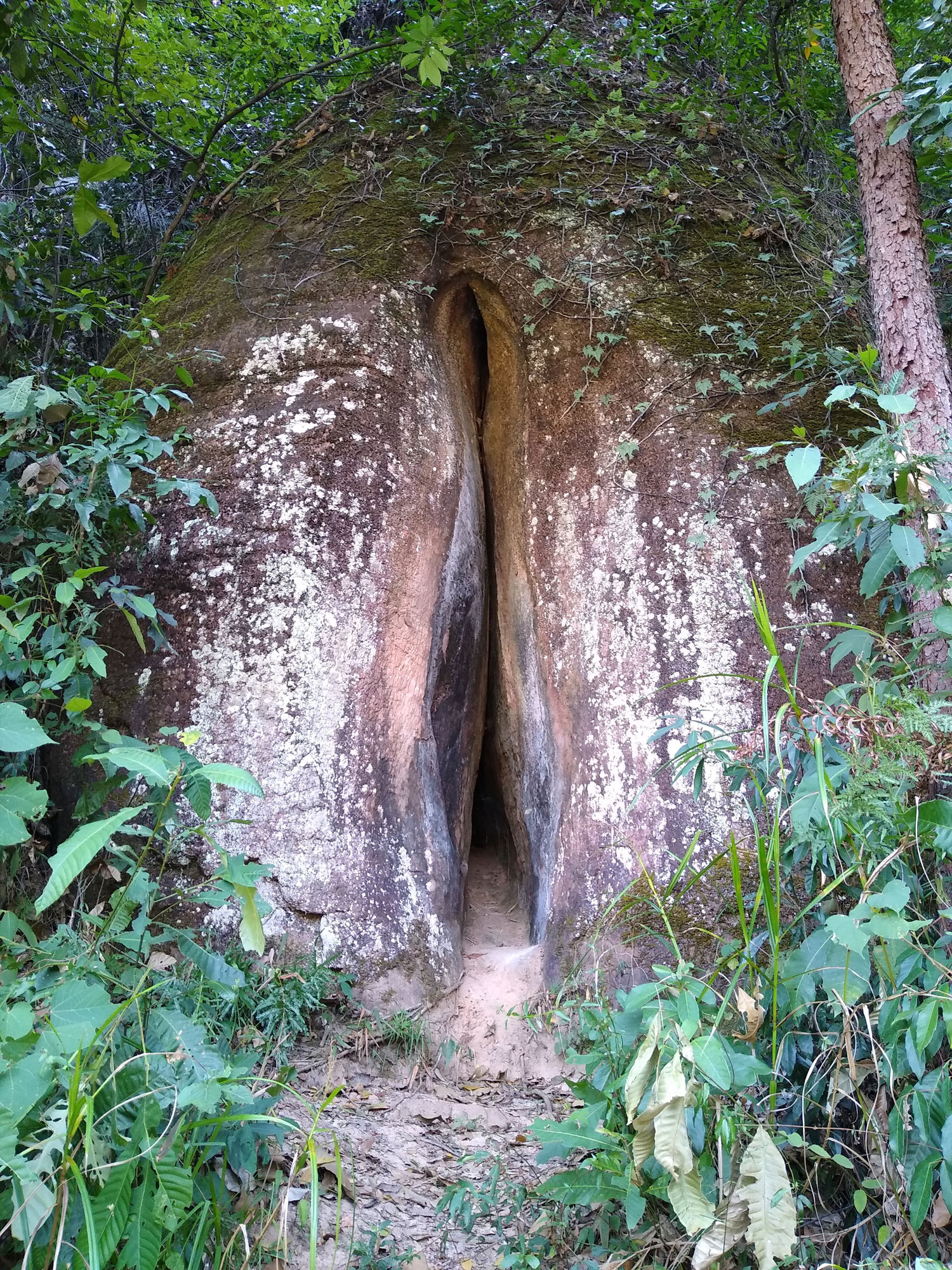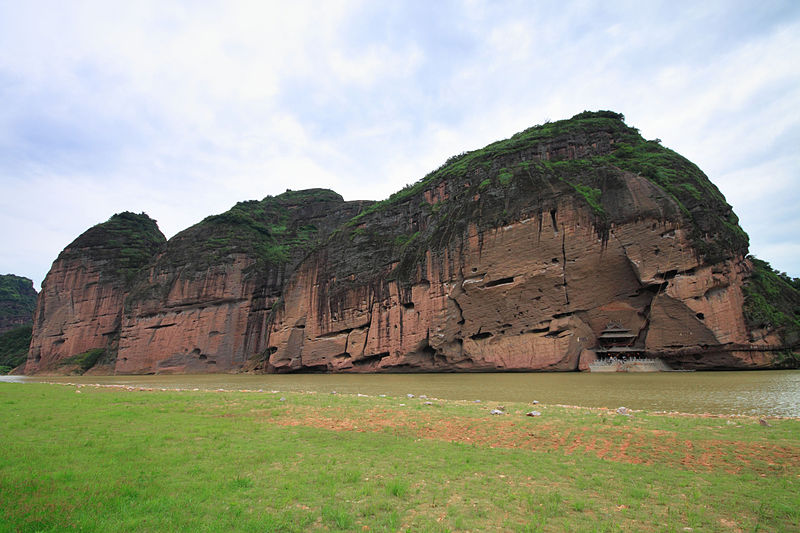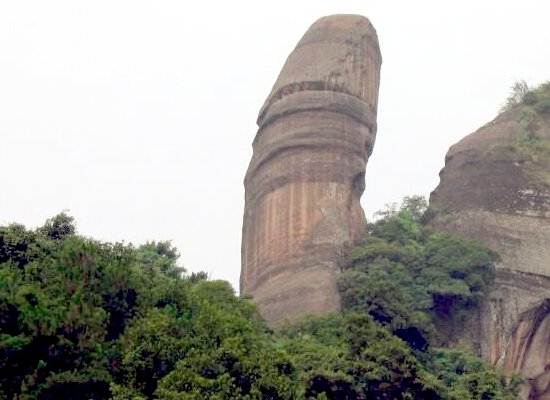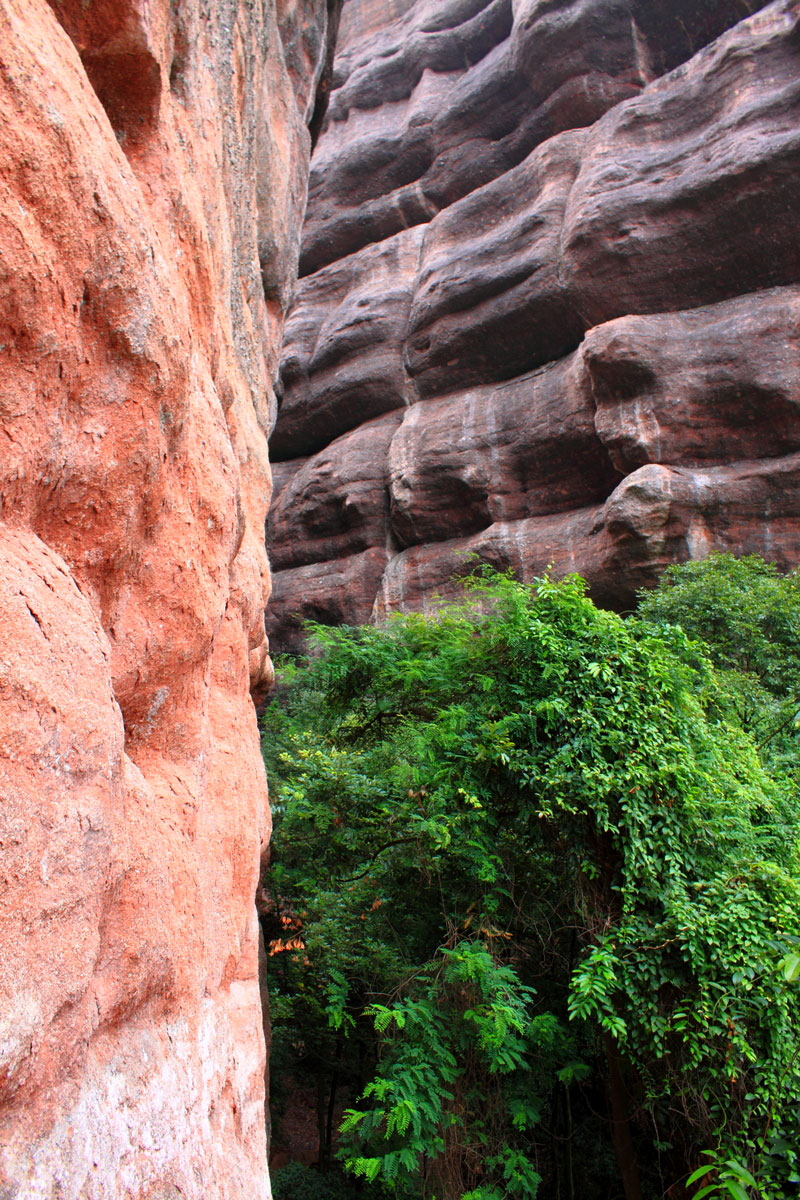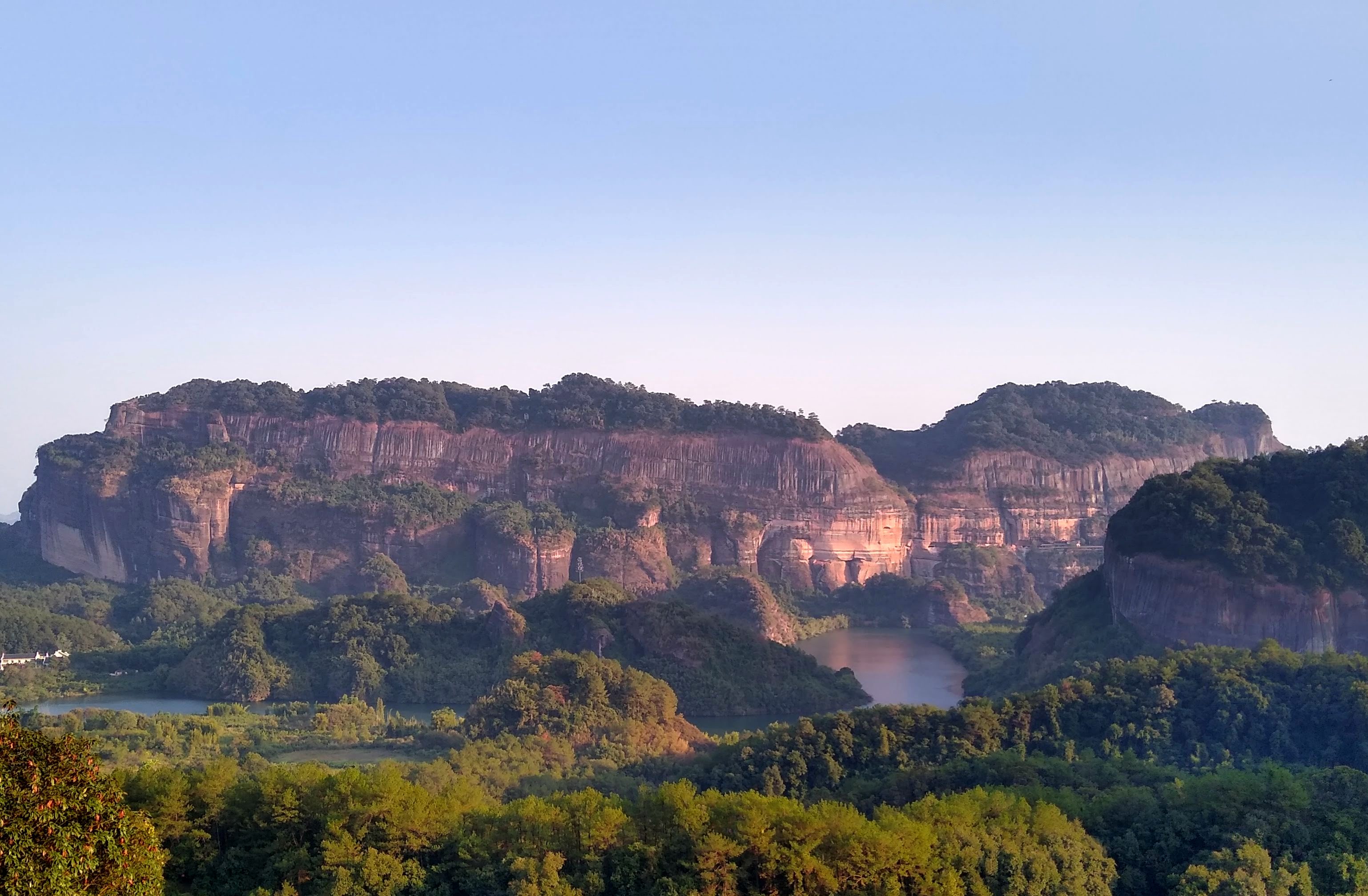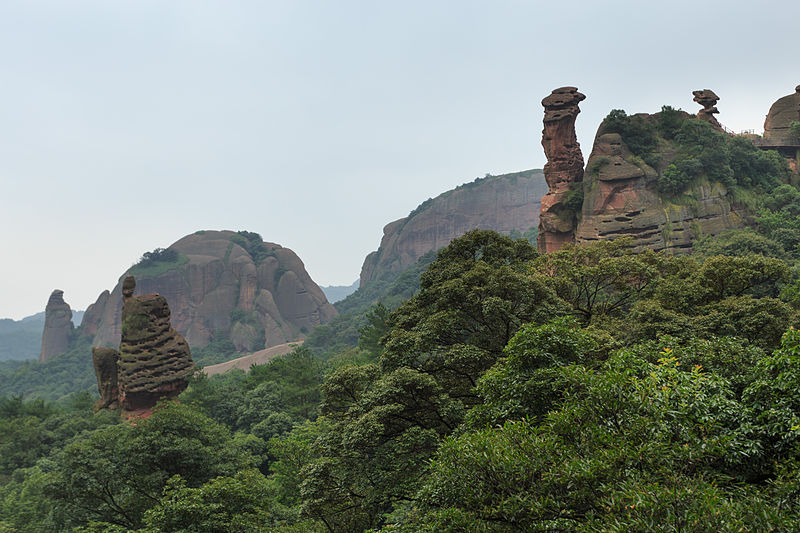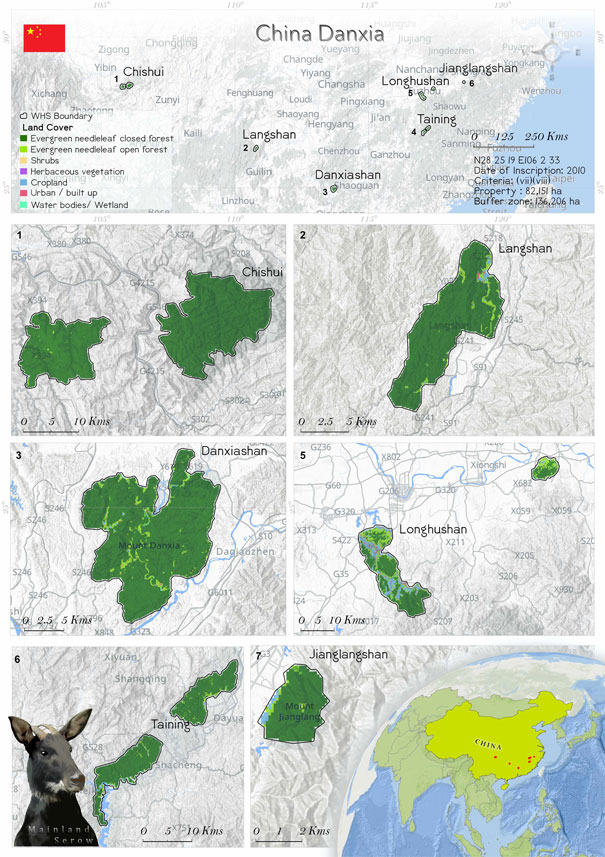
China Danxia (1335)
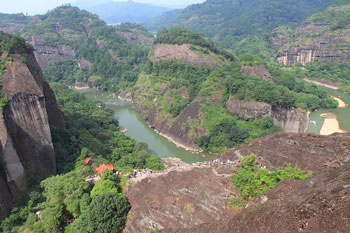 China Danxia was the name given to a group of landscapes formed by uplifting, weathering, erosion of rocks on red sedimentary rock beds and other such factors. The group of landscapes within the property includes Chishui (Guizhou), Taining (Fujian), Langshan (Hunan), Danxiashan (Guangdong), Longhushan (Jiangxi) and Jianglangshan (Zhejiang). The unique landforms of the property are one of the most spectacular landforms found globally. The property was inscribed as a UNSECO World Heritage Site in 2010, and since then it has been recognized on a global platform. The six components of the property display different developmental stages of rock formation and are of significant value for researchers studying geomorphology and other related subjects. The heritage site is home to many endemic species such as Begonia danxiaensis, Firmiana danxiaensis, Paraboea crassifila, Primulina suichuanensis, Primulina hengshanensis, Primulina lianchengensis, Primulina inflata and Semiaquilegia danxiashanensis. The property also protects sub-tropical broad-leaved evergreen forests and hosts many plant and animal species. The widespread property is very well managed and protected by the authorities, and it is commendable that authorities are able to maintain a consistent and uniform legal framework.
China Danxia was the name given to a group of landscapes formed by uplifting, weathering, erosion of rocks on red sedimentary rock beds and other such factors. The group of landscapes within the property includes Chishui (Guizhou), Taining (Fujian), Langshan (Hunan), Danxiashan (Guangdong), Longhushan (Jiangxi) and Jianglangshan (Zhejiang). The unique landforms of the property are one of the most spectacular landforms found globally. The property was inscribed as a UNSECO World Heritage Site in 2010, and since then it has been recognized on a global platform. The six components of the property display different developmental stages of rock formation and are of significant value for researchers studying geomorphology and other related subjects. The heritage site is home to many endemic species such as Begonia danxiaensis, Firmiana danxiaensis, Paraboea crassifila, Primulina suichuanensis, Primulina hengshanensis, Primulina lianchengensis, Primulina inflata and Semiaquilegia danxiashanensis. The property also protects sub-tropical broad-leaved evergreen forests and hosts many plant and animal species. The widespread property is very well managed and protected by the authorities, and it is commendable that authorities are able to maintain a consistent and uniform legal framework.
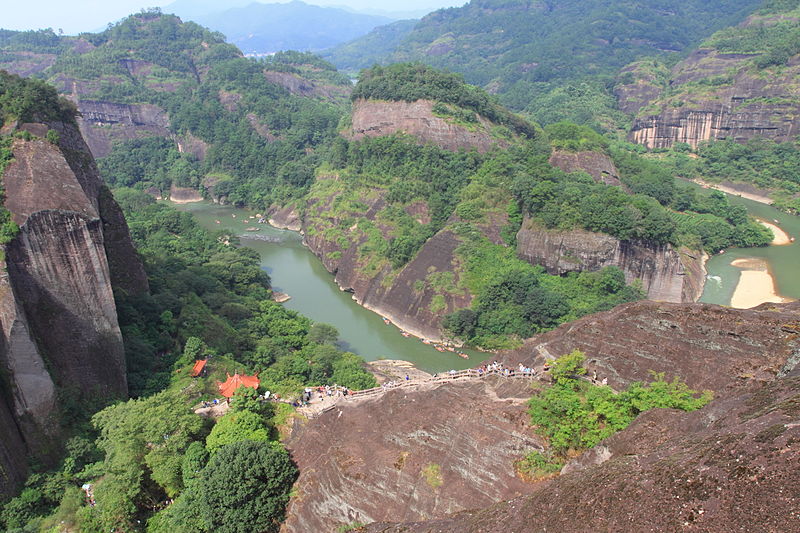 China Danxia is a congregation of geomorphological landscapes. The serial property consists of six components, namely Chishui (Guizhou), Taining (Fujian), Langshan (Hunan), Danxiashan (Guangdong), Longhushan (Jiangxi) and Jianglangshan (Zhejiang). The impact of endogenous (uplifting) and exogenous (erosion, weathering) forces on red sedimentary beds resulted in the formation of these landscapes. The property is a collection of exemplary natural stone pillars, stone towers, deeply incised valleys, cliffs, caves, waterfalls and ravines and is characterized by a range of erosional landforms. The six components of the serial property are different and represent developmental stages of the landscape and can be characterized as least to most eroded. The property is not only famous for its spectacular landscapes but is also home to many endangered plant and animal species. A new endemic plant from the property was described by Tian et al. (2019). It belongs to the genus Begonia and was named Begonia danxiaensis. A study conducted by Chen et al. (2015) revealed that Firmiana danxiaensis, a tree species endemic to Mount Danxia, has a very low genetic diversity due to its confined distribution. It needs to be protected from anthropogenic influences for the survival of the species. A number of new species belonging to the family Gesneriaceae were described from the property, namely Paraboea crassifila (Guo et al 2016), Primulina suichuanensis (Zhou et al 2016), Primulina hengshanensis (Tian et al 2018), Primulina lianchengensis (Ye et al 2019) and Primulina inflata (Xu et al 2020). Semiaquilegia danxiashanensis, a species from Danxia Shan, was also discovered (Zhou et al 2019).
China Danxia is a congregation of geomorphological landscapes. The serial property consists of six components, namely Chishui (Guizhou), Taining (Fujian), Langshan (Hunan), Danxiashan (Guangdong), Longhushan (Jiangxi) and Jianglangshan (Zhejiang). The impact of endogenous (uplifting) and exogenous (erosion, weathering) forces on red sedimentary beds resulted in the formation of these landscapes. The property is a collection of exemplary natural stone pillars, stone towers, deeply incised valleys, cliffs, caves, waterfalls and ravines and is characterized by a range of erosional landforms. The six components of the serial property are different and represent developmental stages of the landscape and can be characterized as least to most eroded. The property is not only famous for its spectacular landscapes but is also home to many endangered plant and animal species. A new endemic plant from the property was described by Tian et al. (2019). It belongs to the genus Begonia and was named Begonia danxiaensis. A study conducted by Chen et al. (2015) revealed that Firmiana danxiaensis, a tree species endemic to Mount Danxia, has a very low genetic diversity due to its confined distribution. It needs to be protected from anthropogenic influences for the survival of the species. A number of new species belonging to the family Gesneriaceae were described from the property, namely Paraboea crassifila (Guo et al 2016), Primulina suichuanensis (Zhou et al 2016), Primulina hengshanensis (Tian et al 2018), Primulina lianchengensis (Ye et al 2019) and Primulina inflata (Xu et al 2020). Semiaquilegia danxiashanensis, a species from Danxia Shan, was also discovered (Zhou et al 2019).
Criterion (vii)
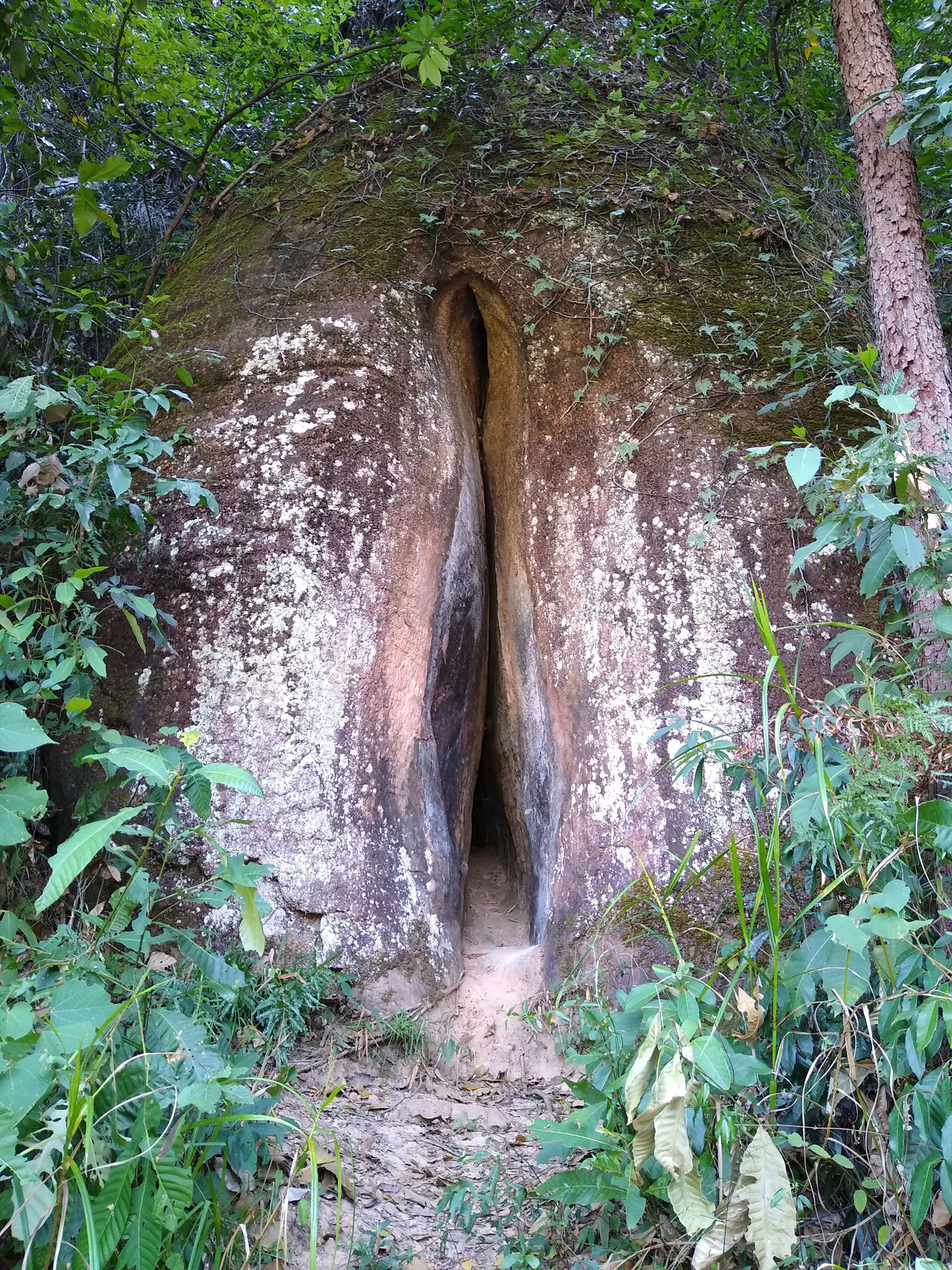 China Danxia is an impressive and unique landscape of great natural beauty. The reddish conglomerate and sandstone that form this landscape of exceptional natural beauty have been shaped into spectacular peaks, pillars, cliffs and imposing gorges. Together with the contrasting forests, winding rivers and majestic waterfalls, China Danxia presents a significant natural phenomenon.
China Danxia is an impressive and unique landscape of great natural beauty. The reddish conglomerate and sandstone that form this landscape of exceptional natural beauty have been shaped into spectacular peaks, pillars, cliffs and imposing gorges. Together with the contrasting forests, winding rivers and majestic waterfalls, China Danxia presents a significant natural phenomenon.
Criterion (viii)
China Danxia contains a wide variety of well developed red-beds landforms such as peaks, towers, mesas, cuestas, cliffs, valleys, caves and arches. Being shaped by both endogenous forces (including uplift) and exogenous forces (including weathering and erosion), China Danxia provides a range of different aspects of the phenomenon of physical landscape developed from continental (terrestrial) reddish conglomerate and sandstone in a warm, humid monsoon climate, illustrating both the range of landforms in relation to the forces and processes that formed them. The component parts represent the best examples of "least eroded" to "most eroded" Danxia landforms, displaying a clear landform sequence from "young" through "mature" to "old age", and with each component site displaying characteristic geomorphologic features of a given stage.
Status
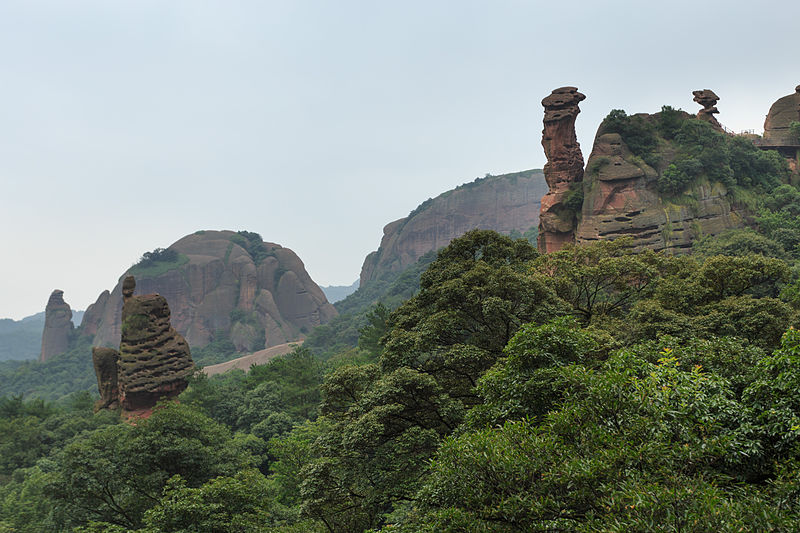 The stone pillars, stone towers, waterfalls, ravines and all the other landforms add to the aesthetic value of the property. China Danxia documents natural beauty on Earth from the young stage to the mature stage and finally to the old stage. The protection and management of the property are adequate to face the challenges and the threats. All the six components are protected areas and are protected under multiple regional and national laws and rules and regulations. Each of the six components has its own management plans. A management plan for the property as a whole has also been prepared. The administrating staff of the heritage site is sufficiently qualified to conserve and manage the property. After the inscription of the property as a UNESCO World Heritage Site, the local stakeholders and communities have become more aware about the property and are very cooperative with the administration. China Danxia is also protected under various conservation instruments, i.e., Danxiashan UNESCO Global Geopark, LonghushanUNESCO Global Geopark and Taining UNESCO Global Geopark (UNESCO 2010).
On November 2009, a typical Danxia stone pillar at Mount Langshan collapsed. A study revealed that this was due to weathering of the soft and intercalated rock layers undergoing a rapid retreat, which changed the stress state of the rock body. Such changes cause an increase in the tensile and compressive stresses, which leads to a collapse of the rock body, either partial or complete (Yan et al 2016).
The 2020 IUCN World Heritage Outlook (China Danxia | World Heritage Outlook (iucn.org)) of the property identifies the current status of the heritage site as being “Good”. The assessment applauds the authorities for managing and conserving a serial property of six widespread components with consistency. The threats to the property are of low level, and the present staff are well equipped to cope with these threats. Mass tourism and rural development pressures may not have an immediate impact on the property, but the site administration must remain vigilant. National and international research on the Danxia geological landscapes should also be given importance, and revision of the integrated management plan might be necessary to upgrade the present strategies. The assessment of the property shows that the inscription of China Danxia in the UNSECO World Heritage List has benefitted the property and has given it international recognition.
The stone pillars, stone towers, waterfalls, ravines and all the other landforms add to the aesthetic value of the property. China Danxia documents natural beauty on Earth from the young stage to the mature stage and finally to the old stage. The protection and management of the property are adequate to face the challenges and the threats. All the six components are protected areas and are protected under multiple regional and national laws and rules and regulations. Each of the six components has its own management plans. A management plan for the property as a whole has also been prepared. The administrating staff of the heritage site is sufficiently qualified to conserve and manage the property. After the inscription of the property as a UNESCO World Heritage Site, the local stakeholders and communities have become more aware about the property and are very cooperative with the administration. China Danxia is also protected under various conservation instruments, i.e., Danxiashan UNESCO Global Geopark, LonghushanUNESCO Global Geopark and Taining UNESCO Global Geopark (UNESCO 2010).
On November 2009, a typical Danxia stone pillar at Mount Langshan collapsed. A study revealed that this was due to weathering of the soft and intercalated rock layers undergoing a rapid retreat, which changed the stress state of the rock body. Such changes cause an increase in the tensile and compressive stresses, which leads to a collapse of the rock body, either partial or complete (Yan et al 2016).
The 2020 IUCN World Heritage Outlook (China Danxia | World Heritage Outlook (iucn.org)) of the property identifies the current status of the heritage site as being “Good”. The assessment applauds the authorities for managing and conserving a serial property of six widespread components with consistency. The threats to the property are of low level, and the present staff are well equipped to cope with these threats. Mass tourism and rural development pressures may not have an immediate impact on the property, but the site administration must remain vigilant. National and international research on the Danxia geological landscapes should also be given importance, and revision of the integrated management plan might be necessary to upgrade the present strategies. The assessment of the property shows that the inscription of China Danxia in the UNSECO World Heritage List has benefitted the property and has given it international recognition.
